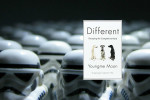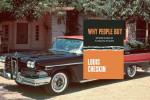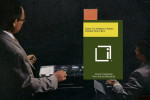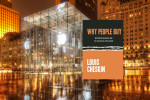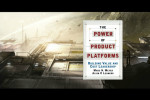Being Different
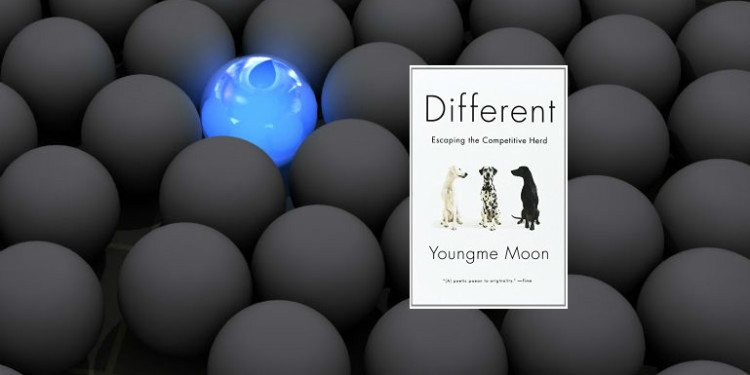
Brands can follow one of three patterns to escape the gravity of hyper-mature categories. Reverse brands, breakaways, and hostile brands can all energize brand loyalty by breaking with the herd. True differentiation is a mindset and a commitment to engage with consumers as real people.
Different: Escaping the Competitive Herd by Youngme Moon
In the second half of Different Youngme Moon provides her antidote to the heterogenous homogeneity she describes in the first part of the book. Brands can distance themselves from the blur of undifferentiated features and attributes by accentuating a dimension which other category participants hesitate to engage with.
Reverse brands strip away one or more common features and replace them with a different benefit or attribute. Breakaway brands challenge our category definitions to bring us new products and services. Hostile brands purposefully exaggerate and alienate to attract hard core fans.
Reverse-positioned brands
Reverse brands say no where others say yes. And they do openly. Without apology.
When Yahoo! was busy packing as much content as humanly possible on a web page, Google released a pure white search page with a single text input box. Reverse brands “defy the augmentation trend in a category in which customers have come to expect augmentation.” While other category members view certain benefits as table stakes, a reverse brand questions the dominant paradigm and refuses to provide a feature that everyone else deems essential. Reverse brands “take away what we expect, but then give us what we don’t.” Google provided incredibly fast, targeted search and refused to splatter their home page with advertising and superfluous content.
it’s possible to improve yourself all the way to mediocrity
Reverse brands resist the urge to provide “even more new features” and bring all equalizer tabs to the top level. Instead, they shift the battleground to a different vector of value. Moon gives IKEA as an example of a brand which reversed the commonly provided full service, high touch furniture business which provided personally sold, fully assembled furniture with delivery services. IKEA has no salespeople on the floor and requires their customers to assemble furniture themselves. In return, IKEA provides a tasty cafe, on-site day care, well-designed interiors, and affordable furniture.
When you remove benefits from a value proposition, you are in some sense crystallizing things.
A key to a brand’s refusal to get on the “augmentation treadmill” is the realization that many consumers within the category are over-served and willing to make tradeoffs for new or scaled back attributes and features. The overblown feature set that is standard within the category diminishes brand loyalty, but a “lop-sided” brand such as In-N-Out-Burger or JetBlue can reinvigorate its audiences through accentuating single attributes at the expense of others.
Breakaways
when it comes to consumption, our classifications tend to be both superficial and arbitrary
The Sony AIBO redefined “robot” from “semi-human functional servant” to “quirky pet.” Instead of providing the stereotypical person-shaped utilitarian machine, Sony decided that “robot” could mean companion and challenged the relationship between the owner and machine. Moreover, it defined the product in such a way (“AIBO loves you, and you love AIBO, and that’s it”) that its owner forgave the frequent unresponsiveness and inability to process commands. The substitution created a different set of rewards and expectations.
breakaway brands…encourage us to let go of the consumption posture we’re include to bring to a product
The Simpsons broke the mold of children’s cartoons and combined elements of adult cartoons to establish its unique perspective on life. Swatch, a well-documented business phenomenon, redefined its watch category offering from largely functional to predominantly fashionable. Executing a breakaway is “a fundamentally delicate process” because the brand must maintain enough of the original definition to support comparison, but take a sufficiently fresh stance to create meaningful differentiation. Breakaways use stereotypes and standards as points of departure for their twists on well known formulas.
Moon notes that “most of the products we consumer on a daily basis are in fact polymorphous.” Breakaways understand this pliability and use it form a new offering from the mold of old ones. In many cases, this act creates an entirely new sub-category. The Simpsons spawned South Park, Beavis and Butt-Head, and King of the Hill.
Hostile Brands
Hostile brands are brands that play hard to get
In contrast to brands like Coke, AT&T, and MasterCard, who encourage us to join together in a spirit of one-ness and harmony, hostile brands turn their backs on the majority of consumers. They exclude. There are only two responses to a hostile brand–you love them or you hate them. There is no middle ground.
When introduced into the US, MINI Cooper faced a market comprised of huge SUVs. They staked their ground with a “XXL XL L M S MINI” ad and accentuated its size by strapping a MINI on top of an SUV. Instead of trying to beat big four-wheelers at their own game, MINI went completely the other direction and threw its size in everyone’s face.
Red Bull is another “take it or leave it” brand. It’s not for everyone. If it makes you uncomfortable, stay away. Red Bull did not try to take on other beverages on their home turf. They invented energy drinks instead.
While conventional brands help us hide, hostile brands force us to show our colors
Hostile brands divide the world into two halves–people who love the product and people who hate it. They are not trying to be everything to everyone. These brands “give us a chance to differentiate ourselves.” That is their magic. We can find our affinities and wrap ourselves in their personality to reinforce our own.
Difference
Idea brands don’t try to compete. That is key. They are more interested in separation than comparison.
Moon points out that her typology is not a hard and fast set of categories, rather it represents archetypes that point in several directions for true differentiation. Because of intense pressure to conform, most brands will not venture out into these terrains. Each “idea brand” has found its own way to differentiate. Harley Davidson, Apple, and Dove (“The Campaign for Real Beauty”) all chose a different trajectory to escape the competitive morass. There are no shortcuts to this type of differentiation–brands must choose a deep value and invest.
our competitive competence is killing us
The vast amount of competitive intelligence available today has a dark side. It leads markets inevitably towards a bland equalization of all attributes as they chase spreadsheet rows representing product features and attributes. The type of innovation required for true differentiation goes beyond technology and engineering. Moon calls it “conceptual innovation” which is borne of “great ideas, novel ideas, original ideas” which are “tenuous at birth.” These must be allowed to flourish and exploration must be allowed to take its course. She observes that the idea brands she describes did not achieve highly differentiated strategies through market research.
Idea brands of the future
She summarizes by identifying three characteristics of idea brands of the future: 1) they will offer something that is scarce; 2) they will be committed to a big idea; and 3) they will be “intensely human.” For Moon, differentiation is not a formula, process, or strategy. It is a way of thinking and a commitment to the differences in each of us.
Idea brands are not perfect brands. Far from it. The are polarizing brands. They are lopsided brands. They are brands devoted to the skew.

